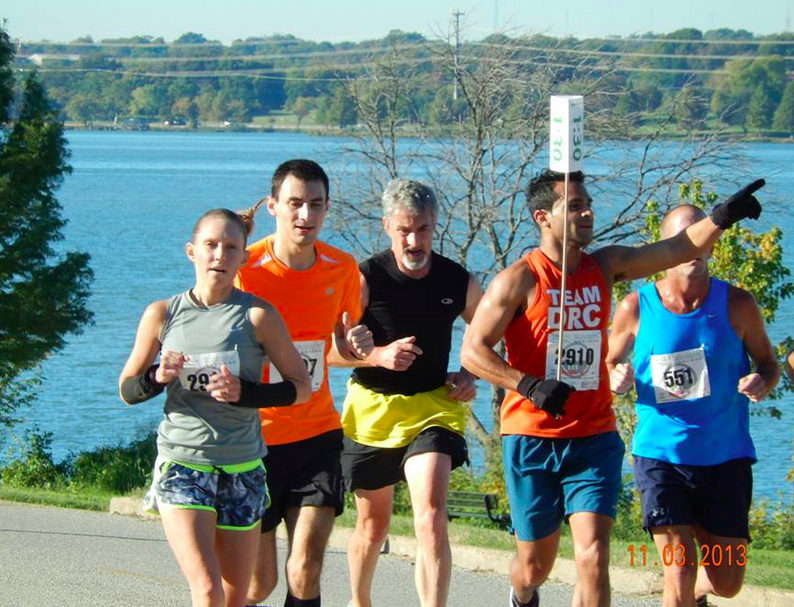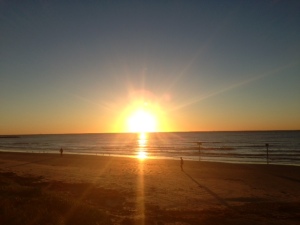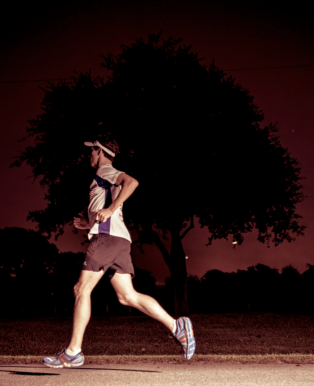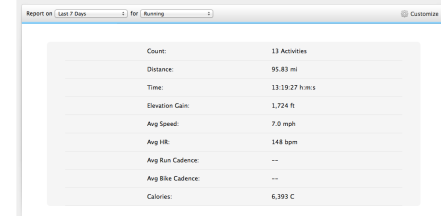
After a serious reckoning over a case of plantar fasciitis last spring, I ditched my Vancouver and St. George marathon plans and took some time off. It was awful.
In August I restarted running 20 minutes at a time. I began working with Coach Eric more than a year ago, which has improved my running, but has been hard work. I have always worked hard at running, but in a haphazard way. Now it is channeled and focused. I put in several weeks this season of 80-100 miles sans injury (I am dealing with some calf pain during this last week, which I’ll mention in a minute) and by the November DRC Half Marathon, I was back where I was last year at this time, which was an all-time best for me.
I did track work and base building during August and September and averaged about 55-60 miles per week during that phase with two harder speed and interval workouts per week. In October and November I moved to twice-a-day easy runs with two harder runs worked in per week, one of them long. The longest runs I did were about two hours (16 miles) with an added hour (6 miles) later that same day — I think I only had a day or two that actually was that long.
Right before I started the two-a-days I had a half-week off due to a family emergency. I had two days off in November when I just felt like I was falling into overtraining territory. I took one day off the Friday after Thanksgiving. Other than that, I haven’t taken any days off since late September.
Many of my running friends have asked me how — with a full-time, demanding job and children — I manage to work in the mileage.
Here are a few tips:

1. Read about someone else who does it. Sheri Piers has become my inspiration. She’s about my age – a year or two older – and works as a nurse practitioner (they can prescribe medicine so basically, a doctor). She has a slew of kids and manages to clock some 90-130 miles per week.
She has come in the top 10 in Boston two of the last three years, winning 1st and 2nd place respectively in the masters division in the last two Boston Marathons. She qualified for the Olympic marathon trials.
Someone reportedly asked her, ‘What happens if you don’t get up to run tomorrow?’ And [she says], ‘What do you mean? There is no not getting up. I have three alarm clocks going.'”
2. Learn to be alone. I love running with my group when possible, but I had to learn to love running alone, because I don’t have time to arrange for accompaniment through all these miles. (Though some have been known to meet me at the track for mile repeats at 5 a.m. or at the lake for a 9-mile loop at 4.). The secret to my getting through the long slow miles is – drumroll – a subscription to Audible, where I download books. When things got really tough, I began listening to running-specific books — there is a novel called Flanagan’s Run that I return to time and time again. It is about a cross-country (literally) footrace in the 1930s and it is based on a real event, the 1928 Bunion Derby.
There is a scene that gets me especially pumped in which the runners on their trek through the Rocky Mountains start mornings with a chant.
“’I am a distance runner, my bones are light, my muscles lean. My heart will pump blood forever flushing my blood with oxygen.’ Their voices would echo through the mountains … the litany occasionally would be shouted, as if it were not merely an affirmation of their nature, but a gesture of their defiance. ‘I am a runner. I live as a runner. I eat as a runner. I see the weather, the road the world as a runner. I have come to run …”
In the beginning, one of the runners finds the words trite, like a prayer you recite in church, he says, but as the days wear on, he shouts and believes he is now describing himself.
I listen to all manner of books and novels and I mix in some runner and triathlete biographies and I also listen to music.
3. Mix up the terrain. Instead of the same routes day in and out, I drive to different parts of Dallas to do my runs, or I run from work in Lake wood or hit the Katy trail and Downtown Dallas. I love being out of town, where I can find new places to run.

One of my favorite runs this season was in early October. My cousin got married on a Sunday in Galveston. I stayed the night but had to be back to the office in Dallas by noon Monday, so I rose at 4 a.m. and hit the sea wall for a 90-minute (split into three intervals) tempo run. It was the first cool run of the season — 69 degrees. At first I could only hear the ocean, but as the first hour wore on I could see the hint of sunlight rising over the horizon and the last mile was done right on the sand in my bare feet. It was magic.
If you are running more than 70 miles a week, some of it needs to be done on grass (or sand or trail dirt). I do a lot of running at Richland College, on the soccer fields and track.
I do some treadmill too. I don’t mind it at all, because I have my books.
4. Want it. Really, no one is going to run this much unless they have a reason. And there is no good reason to do this, unless you are one of the handful of young people working toward a scholarship or sponsorship in distance running. You just find that you want to or you don’t. If you don’t care about dropping 20 minutes off your marathon time, then it would be stupid to spend 12 hours of your week trying to do it.
I started running because I wanted to say ‘I ran a marathon’. Now I keep working because I want to be a good runner. I don’t really know why I want to be a good runner. I am too old to become a professional runner or an Olympic runner. But still I have this tugging desire to see what my limits are. It doesn’t make any logical sense. It doesn’t make any logical sense that one would climb a mountain, risking his life, simply for the thrill of reaching the top and looking out at the world from great heights. He does it not for money or material winnings, but for a feeling. I haven’t had the urge yet to climb a mountain, but I think that feeling I get at the end of a well-fought race is similar to the feeling a mountaineer gets when he reaches the peak. The less attainable the peak, the greater the feeling.
Anyway, now I have essentially completed the training and the race is one week away.
One week ago, I would have told you I am in the shape of my life. My recent marathon pace runs — done by heart rate — have been in the 7:00-7:15 range. I ran the 8-mile Dallas Turkey Trot in 52:31, about a 6:31 per mile pace.
But I limped away from that race and am now nursing a soleus strain (diagnosed by the internet) and will do the last week of my training on the elliptical.
One important thing I learned last season was to not put all my hopes into one race. When I put in the work, all sorts of positive things happen. Maybe that includes meeting my marathon goals, or maybe something doesn’t work out and I learn a new lesson. Like the main character, Doc, in Flanagan’s Run, “He knew who he was … he had gotten to the center of himself … he had no need to prove anything …”
A new personal best and an attainment of goal time, however, is a much-desired affirmation.
Temps on race day, blessedly, will not be hot like last year. However we might freeze and we might get a nasty wind.
I do not care. I have been waiting for a cold marathon, one for which I am properly trained, for years. Bring it on.















